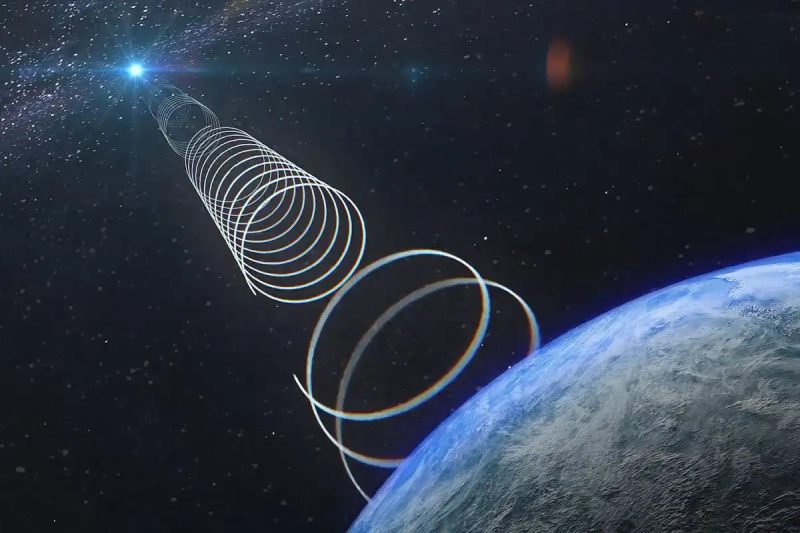
The Strongest Rapid Radio Burst Ever Identified Is Traced to an Unexpected Place
Rapid bursts of strong and enigmatic radio waves from outer space are known as fast radio bursts, or FRBs.
Researchers now have some understanding of the range of settings that might produce such unusual light emissions after they were able to locate the source of the most potent and farthest-traveling FRB ever to reach Earth: a close-knit cluster of seven galaxies.
Dubbed FRB 20220610A, new Hubble Space Telescope photos and analysis by an international team of researchers suggest the burst originates from somewhere within the cluster, and their interactions may have contributed to its formation.
As a result of this specific transmission’s refusal to conform to some of the most widely held beliefs about how the universe functions, physicists are now taking into consideration the potential circumstances in which FRBs could emerge.
“Without the Hubble’s imaging, it would still remain a mystery as to whether this FRB originated from one monolithic galaxy or from some type of interacting system,” says astronomer Alexa Gordon, from Northwestern University.
“It’s these types of environments – these weird ones – that drive us toward a better understanding of the mystery of FRBs.”
The Universe is currently approximately 13.8 billion years old; the signal from FRB 20220610A originates from a time when the Universe was just 5 billion years old, to give you an indication of the distance this FRB has traveled.
Early observations of the amorphous blob at the start of the FRB led scientists to believe that many galaxies might be involved. Still, a count of seven was unexpected. These galaxies are also densely clustered; in fact, they might all fit inside the Milky Way.
The fact that these galaxies are so close to one another suggests that they probably interact in some way. This could explain some of the FRB’s intensity if stars are forming quickly after one another.
“There are some signs that the group members are interacting,” says astrophysicist Wen-fai Fong, from Northwestern University. “In other words, they could be trading materials or possibly on a path to merging.”
“These groups of galaxies, called compact groups, are incredibly rare environments in the Universe and are the densest galaxy-scale structures we know of.”
Scientists are still surprised and fascinated by FRBs because of their shifting signals and unanswered concerns regarding their origin. As of right moment, the most plausible theory is that they originate from a celestial object such as a black hole or neutron star.
“With a larger sample of distant FRBs, we can begin to study the evolution of FRBs and their host properties by connecting them to more nearby ones and perhaps even start to identify more strange populations,” Dong says.
Regardless of the circumstances, data breaches can have a disastrous effect on organizations and data… Read More
Financial theory, computer science, and mathematical models are all combined in the dynamic field of… Read More
You'll have to make a lot of decisions when looking for a house, such as… Read More
Patience is perhaps the most valuable quality an investor can possess, especially during these uncertain… Read More
In today's fast-paced digital landscape, effective communication is the cornerstone of business success. As businesses… Read More
Social media has become a crucial component of marketing plans for companies of all kinds… Read More